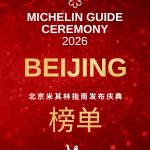转自:西班牙里奥哈葡萄酒(微信号:DOCa_Rioja_China)
里奥哈法定葡萄酒优质原产地批准“单一园” 葡萄酒认证及顶级品质里奥哈起泡酒酿制新规
D.O.Ca. Rioja approves regulation for identifying ‘single vineyard’ wines and producing top quality sparkling Riojas
两年之前,里奥哈宣布已准备好迎接一个全新的时代。这是对最新的市场需求趋势做出的回应。同时也是为了实现里奥哈2005-2025战略规划中的一项重要目标:以全新的价值定位巩固世界级品质葡萄酒原产地地位。
Two years ago, it was announced how Rioja was facing a new era in response to the concerns of market demands and a search for new value arguments to reinforce its leading position as a world-class quality wine region, a prime objective set by its 2005-2020 Strategic Plan.
单一葡萄园 | Single vineyards
在实现这个战略目标的道路上,今天里奥哈完成了又一个里程碑:获得里奥哈法定葡萄酒优质原产地管委会对“单一园”葡萄酒认证规定的批准。这一新的举措是为了响应消费市场对于葡萄来源具体地块信息的要求。酿酒商也正好通过这个机会将自己已经在市场销售的单一园产品更醒目地标识出来;而从业内意见领袖和广大消费者那里也已经传来希望葡萄酒瓶背标上信息更为详尽的呼声。
In keeping with this strategy, Rioja reaches a milestone today with the approval by the D.O.Ca. Rioja Control Board of the regulations regarding the identification of wines as ‘Single Vineyard’. This is in response to market interest in having more information on the specific plots where the grapes come from. This reconciles the interests of winemakers to highlight these wines, which were already available on the market, as well as those of opinion leaders and end consumers who demanded more information on the label.
里奥哈目前在酒瓶背标和“里奥哈信誉章”上成功采用的四级分类(新酒-原产地酒、陈酿、珍藏、特级珍藏)仍将作为认证法规的基础。而新的系列标识在通过一套特定流程考验后将可以添加在酒瓶背标上。新增的信息将会直接指明葡萄酒出产的风土特点以及葡萄的具体来源,从而更好地反映出当今市场上的里奥哈葡萄酒所具备的高度多样性。
A process is to be implemented to allow these mentions to be included in the back labels and trustseals of the already successful Rioja Wine categories (Young-Generic, Crianza, Reserva and Gran Reserva), which continue as basis for regulation. The added information, referring directly to the terroir and origins of the wine, will reflect the great diversity offered by Rioja wine today.
新的标识信息将会在符合里奥哈管委会制定的品质和正品保障规定的前提下将特别的单一葡萄园和其周遭环境区分开来。比如,“单一葡萄园”必须具备相关自然条件,包括葡萄藤年龄在35年以上,每公顷产量低于产区总体相应产量上限20%。另外,葡萄园必须具备均衡的种植结构,并且需要全部手工采收。同时还要求酿造过程的全程可追溯性,并带有前期检查和双重品质评估(酿造完成即时以及上市销售之前)。而且上市前评估结果必须达到“优秀”等级。
The new mention seeks to set specific vineyards apart from their surroundings, with requirements in tune with the Control Board quality and authenticity policy. For example, it will be necessary to demonstrate the natural limits of the “Single vineyard”, which will require long-time ownership, vines over 35 years old, and yields at least 20% below those allowed for the wine region as a whole. They will have to be well-balanced vineyards and will be required to be harvested manually. Production traceability will also be a requirement, with prior checks and double quality assessment (right after production and before being put on the market), with the later requiring a rating of “excellent”.
与此同时,原产地管委会正在筹划增补相关规定,将分区和相关市镇信息包含在背标中,以此向消费者提供更为详尽的信息。
Likewise, the Control Board is about to update regulations regarding the mention of sub-areas and municipalities on the labels, aiming to provide more information for consumers.
里奥哈起泡酒 | Sparkling Riojas
里奥哈将会在历史上首次允许酿造使用原产地名称的高品质起泡白葡萄酒和起泡桃红葡萄酒。这样,里奥哈目前的静态酒系列(红葡萄酒、桃红葡萄酒、白葡萄酒)将会得到兼具品质和地位的新产品系列加强。起泡酒将会按照传统工艺进行酿造。这一特点会在相关质保元素(标签和封口)上体现出来,并且在酒瓶背标上也会有特别的标识。
Rioja is about to allow, for the first time, production of quality white and rosé sparkling wines bearing the region’s name. Thus, Rioja’s current range of still wines (red, rosé and white) will be complemented with a new product that will have both quality and prestige. The sparkling wines will be made according to traditional methods and this will be included in the guarantee documents (labels and seals) and specifically mentioned on the label.
起泡葡萄酒的酿造可取材任意葡萄品种。而酿制工艺要求需要和此类别葡萄酒所广泛接受的标准一致,例如装瓶时的酒精含量需要在11%-13%范围内。这些起泡酒在上市销售前将会经过双重评价流程,其中包括物理和化学特性检测和感官品评。另外,在二次发酵过程中要求经过15个月的陈化。而对顶级系列这个要求提高到36个月。这些严格的要求都值得消费者对于里奥哈将要推向市场的起泡酒系列充满期待。
All grape varieties may be used to make these wines and production parameters will be those which are generally accepted for this type of wine, with alcohol content between 11% and 13% in the finished product. The wines will be subjected to a dual rating process, including physical-chemical tests and sensorial tests before being sold. A minimum ageing period of 15 months for the second fermentation, increasing to 36 months for the top range, is indicative of the type of high quality sparkling wine to be offered to the market.



